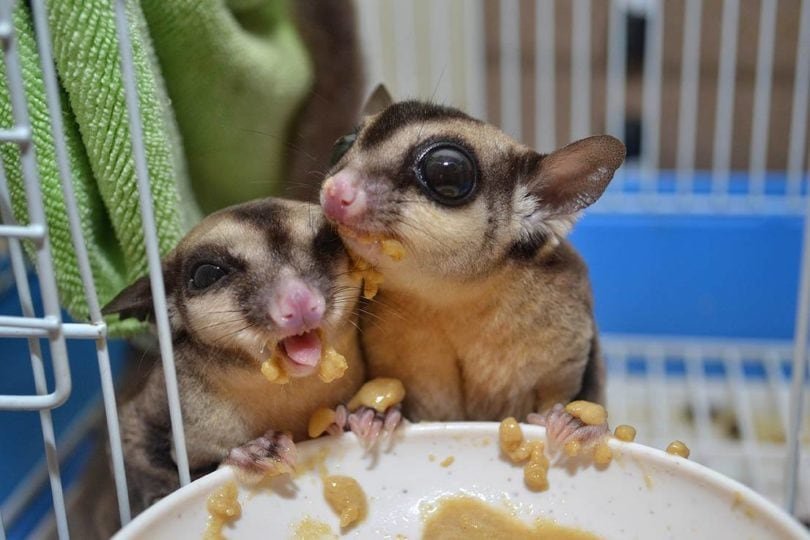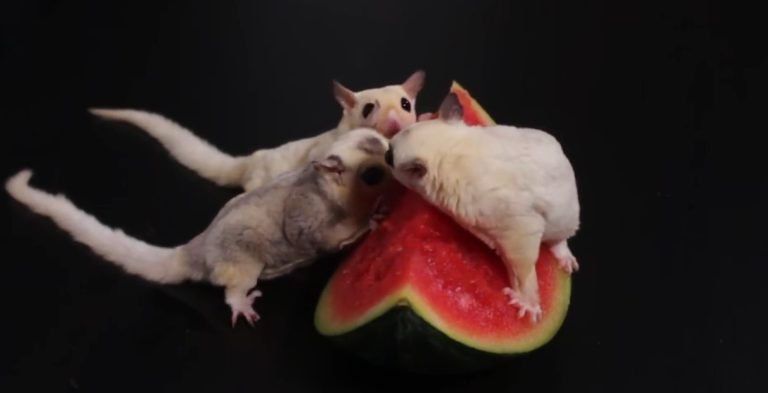What Food Do Sugar Gliders Eat
It’s no secret that sugar gliders are unique and adorable pets. These small marsupials are known for their gliding ability, playful nature, and social behavior. But when it comes to their diet, what do sugar gliders eat? In this article, we’ll explore what food do sugar gliders eat and the dietary needs of sugar gliders in depth, including the types of foods they should consume to stay healthy and thrive in captivity.
Sugar gliders have specific dietary needs, primarily consisting of a balanced mix of proteins, fruits, vegetables, and supplements.
Protein
Protein is a crucial component of a sugar glider’s diet. In the wild, these creatures consume insects, small vertebrates, and tree sap to meet their protein requirements. In captivity, sugar glider owners often rely on commercial pellet diets specifically formulated for sugar gliders. These pellets contain a blend of high-quality proteins, vitamins, and minerals to support their overall health. Additionally, sugar gliders can also be fed small portions of lean meats like chicken or turkey as a source of protein.

Fruits and Vegetables
Fruits and vegetables provide essential nutrients and antioxidants for sugar gliders. Some recommended fruits include apples, grapes, strawberries, and blueberries. It’s important to note that gliders have a natural preference for nectar and sweet fruits, so feeding them a variety of fruits will keep their palate satisfied while ensuring a balanced diet. When it comes to vegetables, options like carrots, sweet potatoes, peas, and leafy greens are excellent choices.
Gut-loading and Calcium
Gut-loading is a process of feeding insects a nutritious diet to enhance their nutrient content before feeding them to sugar gliders. This ensures that the gliders receive the maximum nutritional benefits from the insects they consume. Calcium is also crucial for sugar gliders, as it aids in the development and maintenance of strong bones and teeth. Calcium supplements can be sprinkled over their food or provided in the form of a cuttlebone for them to chew on.
Treats and Foraging
While a balanced main diet is essential, treats and foraging opportunities provide mental stimulation for sugar gliders. You can offer them small amounts of additional foods like mealworms, crickets, or yogurt as an occasional treat. Additionally, providing foraging opportunities through toys or hiding treats in their enclosure can mimic their natural behavior and keep them mentally stimulated.
Water
Providing fresh and clean water is vital for sugar gliders’ well-being. A water bottle with a sipper tube should be placed in their enclosure, ensuring they have access to water at all times. It’s important to regularly clean and refill the water bottle to prevent bacterial growth.
Frequently Asked Questions
Q: Can sugar gliders eat fruits every day?
A: While fruits are an essential part of a sugar glider’s diet, they should be fed in moderation. Offering a variety of fruits 2-3 times a week is sufficient to provide the necessary nutrients without exceeding their sugar intake.
Q: Can sugar gliders eat nuts?
A: Nuts should be avoided as they are high in fat and can lead to obesity or other health issues in sugar gliders. Stick to feeding them a balanced combination of proteins, fruits, and vegetables for optimal health.
Q: Can sugar gliders drink milk?
A: No, sugar gliders cannot digest cow’s milk or dairy products. They should stick to water as their primary source of hydration.
Final Thoughts
In conclusion, maintaining a balanced and varied diet is crucial to the health and well-being of sugar gliders. Providing them with a mixture of proteins, fruits, vegetables, and supplements ensures they receive all the essential nutrients they need. Remember to consult with a veterinarian who specializes in exotic animals for specific dietary recommendations and guidelines for your sugar glider. By providing the right diet, you can help your adorable sugar glider live a long, healthy, and happy life by your side.







